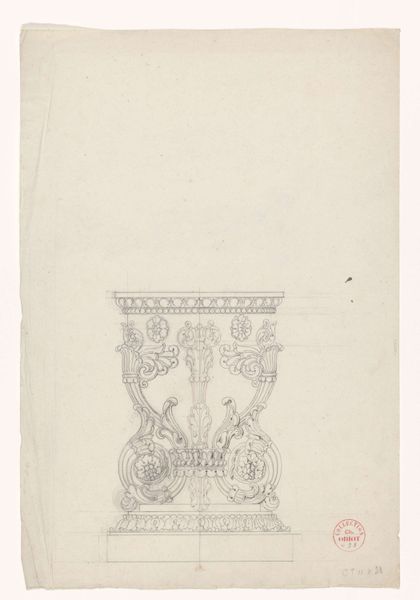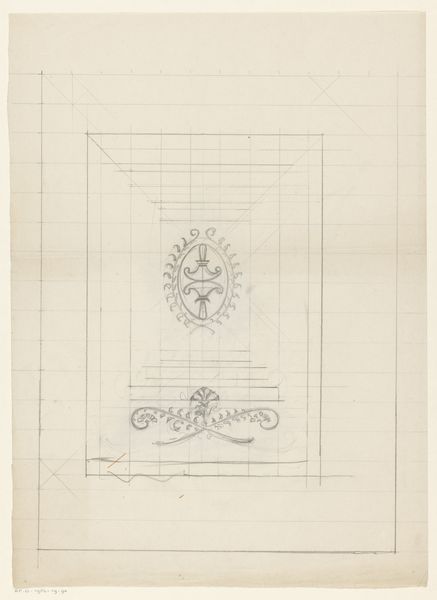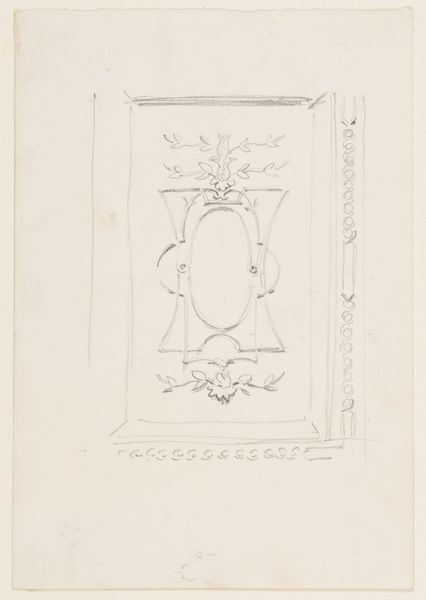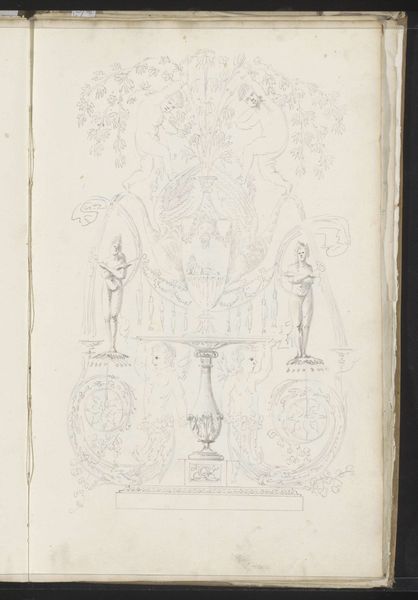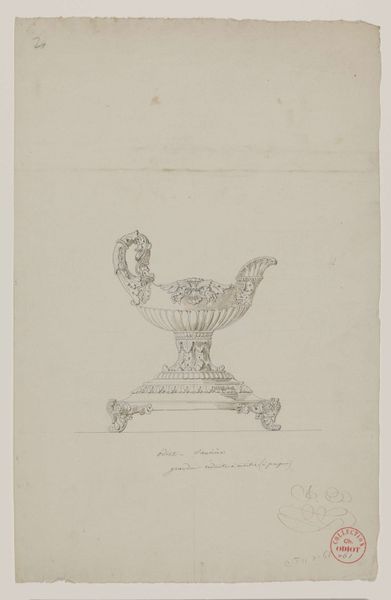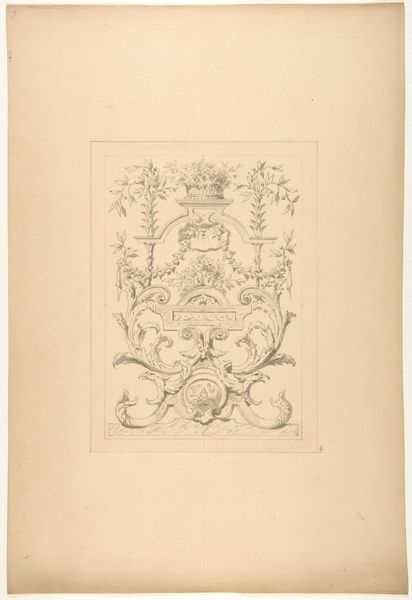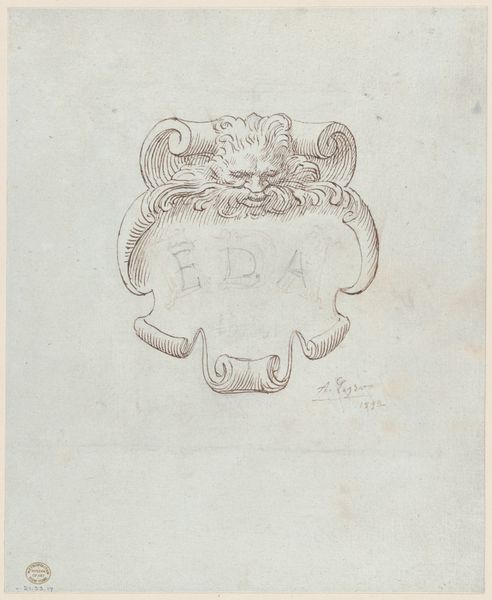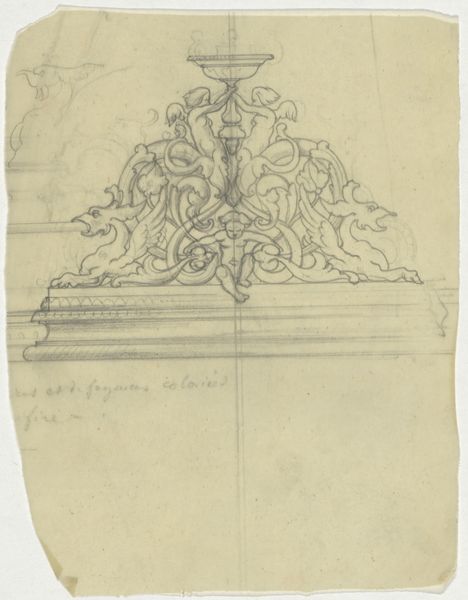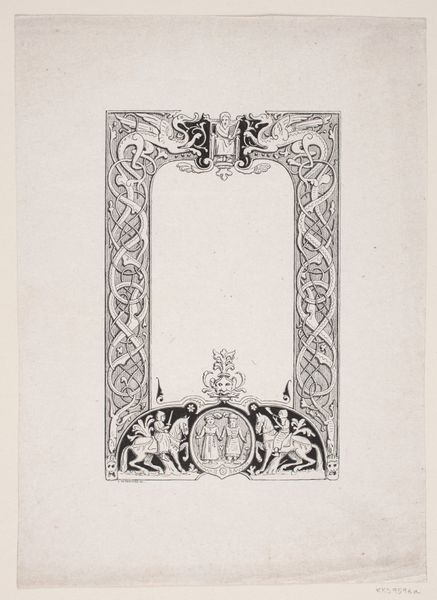
drawing, paper, pencil
#
drawing
#
neoclacissism
#
paper
#
geometric
#
pencil
Dimensions: height 468 mm, width 306 mm
Copyright: Rijks Museum: Open Domain
Editor: So this delicate pencil drawing is a design, "Ontwerp voor een olie- en azijnstel," or "Design for an Oil and Vinegar Set" by Charles-Nicolas Odiot, dating back to around 1825-1830. The symmetry is really striking. What can you tell me about the visual symbolism in this piece? Curator: Well, symmetry itself is a powerful symbol here, isn't it? Think of the scales of justice, or the human face – symmetry speaks of balance, order, and harmony. Notice how Odiot uses these urn shapes and repeating motifs? He’s drawing on the visual language of Neoclassicism, which deliberately echoed the art of ancient Greece and Rome. Why do you think artists returned to those ancient forms? Editor: Perhaps a way to add grandeur, a connection to past empires, which speaks of power and longevity? I’m thinking of how ancient Roman imagery was revived during the Renaissance. Curator: Exactly. The imagery becomes a kind of shorthand. Odiot evokes the grandeur of the past. This tells potential customers that his work embodies those same qualities of timeless elegance. It's about creating cultural resonance through form. What kind of a mood is created, drawing upon such symbolic motifs from the past? Editor: Definitely a formal, elegant vibe – meant for sophisticated dining. It is aspirational, in a way. The geometric forms also hint at an element of control and rationality. Curator: Precisely. Neoclassicism sought to impose order on the world through art, reflecting the Enlightenment’s emphasis on reason. And the choice of oil and vinegar, essential yet distinct elements, further reinforces the symbolic need for balance. The very objects, beyond their design, emphasize symmetry. Editor: That’s fascinating, seeing how even everyday items can be infused with layers of meaning! I never would have noticed the connection to the Enlightenment. Curator: It's about recognizing the threads that connect us to history through the objects we create and use. These designs hold so much more meaning that meets the eye.
Comments
No comments
Be the first to comment and join the conversation on the ultimate creative platform.
